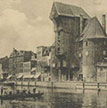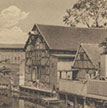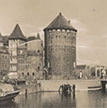The Hübert family’s history is traceable back to the mid 15th century to the Kingdom of Prussia and to the outlying areas of Danzig mainly the lowlands of the Weichsel delta or the Gross-Werder (large marsh) region. Having traveled there many times in the recent years and becoming more acquainted with our families past we were able to delve into how these regions peoples including our families carried out their lives. Due to our families connection to this region we are attached to its history and continue to carry forward the noteworthy characteristics of the Prussian Mennonite into our work.
Prussian Mennonites in this region practiced agriculture for over 400 years, with most of the families being farmers throughout the entire period of their occupancy 1534-1945. The chief and extraordinary agricultural achievements of the Prussian Mennonite farmers lie in the field of land-drainage. It was only their proved ability to make arable the land lying below sea level that secured the privilege of settlement in the Weichsel Delta for the Prussian Mennonites of 1534 and later.
The Prussian Mennonites brought with them from Holland the knowledge and skills essential to create community settlements in the shallow lagoons and swamps of the Weichsel Delta, much of which lay as much as six feet below sea level. To do this a systematic drainage of the land was an absolute necessity and this was achieved through a sense of community and the work of the timberframed windmill.
In the building of the timberframed barns and houses in the farms below sea level, care had to be taken to locate the building area above high water. Since the buildable areas necessary to construct these timbered barns and houses was scarce careful planning and resource management was of utmost importance. Local materials for construction consisted primarily of clay for brick making and timber as there was an abundance of Oak and Baltic pine. We have seen both of these species of wood utilized in the construction of the half timbered (timberframe) houses.
In the later half of the 19th century, agriculture was increasing as was the expansion of acreage and the standard of living. Along with the creative activity in the area the use of timber in the development of the homes started to become more of a symbol of prosperity and strength as seen in the stately arcaded farm homes pictured here. Only a handful of these homes survive today. We have visited the surviving homes including one fine surviving example built by our family over 100 years ago. It is important to realize the skills and time spent on such fine timber frame wood work. We have seen hand crafted timberframe examples from this era that would be difficult and almost impossible to replicate today.
Due to our families connection to this region we are attached to its history and continue to carry forward the noteworthy characteristics of the Prussian Mennonite through our product and work ethic.










